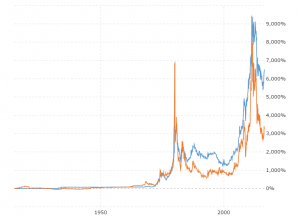Innovators $1 Coin Process Runs Aground
We talked back in June about the upcoming new $1-coin release that has been legislated, and back then it seemed that everything was moving along on schedule. But now, following the meeting of the Citizen’s Coinage Advisory Committee on July 31, to review the proposed designs, things have become a bit unstuck. It seems the curse around American $1 circulation coins has not been laid to rest – quite the reverse.
So what happened? On July 31, 2018, the CCAC held a teleconference to review the designs for the coin, put forward by the Mint. These meetings can be stormy – after all, putting 11 people in a room, and asking them to pick one design of anything that they all like is just asking for trouble, right? Let’s recall that the CCAC, which was created in 2003, is mandated to ‘advise the Secretary of the Treasury on the selection of themes and designs for coins’. Notice it says ‘advise’, not ‘choose’, but some critics are of the opinion that some members of the CCAC overstep their mandate. In any case, by the time this meeting was over, every design had been rejected, and the project now seems unlikely to get off the ground as originally planned. That is possible – the legislation enabling the new coins says Congress ‘may’ issue the coin – it doesn’t say they must. So any delays will not be a fatal blow.
So what went wrong? Looking at the designs offered for review, it is easy to see why the CCAC said, ‘No’. The designers were set a pretty impossible task, to put a whole raft of things on the coins, as well as celebrate innovation in America. The obverse is not so much of a problem. The same design is to be used on all the coins, and a single design was put forward – a modified design of Don Everhart’s Statue of Liberty. This well-known design appears on the Presidential $1 Coins issued between 2007 and 2016. It shows a Statue of Liberty stretching to the rim of the coin, along with the inscriptions ‘$1’ and ‘IN GOD WE TRUST’. While the design might be seen to have echoes of pre-WWII fascist architecture in Germany and Italy, it can also be seen as an attractive modern design with art-deco overtones.
It is the reverse where the problems arise, and where the designs presented were enough to have the CCAC members more than a little upset. The problem seems to be that Congress mandated that so many things appear on the reverse that creating a good design is darn near impossible. First there is a facsimile of George Washington’s signature. The rationale for this is that he was the president who signed the first patent issued in America. As well, the words, ‘UNITED STATES OF AMERICA’ and, ‘AMERICAN INNOVATORS’ must be shown as well. A further difficulty is that the innovation cannot be shown as a portrait of, say, Edison. Instead the design must be ‘emblematic’ of the innovation or its creator(s). Hmm, what would an emblem of the transistor look like? Or of the Arpanet (precursor of the internet)? Whatever it is, it must fit into a very tiny space, after all that writing is accommodated.
Anyway, it seems that not one of the eight designs put forward made the grade in the eyes of the CCAC, who ended the meeting by passing a unanimous motion that they would not review the designs at all – suggesting they had ‘quality concerns’. When you look at the designs offered up, it’s easy to see exactly what they meant.








